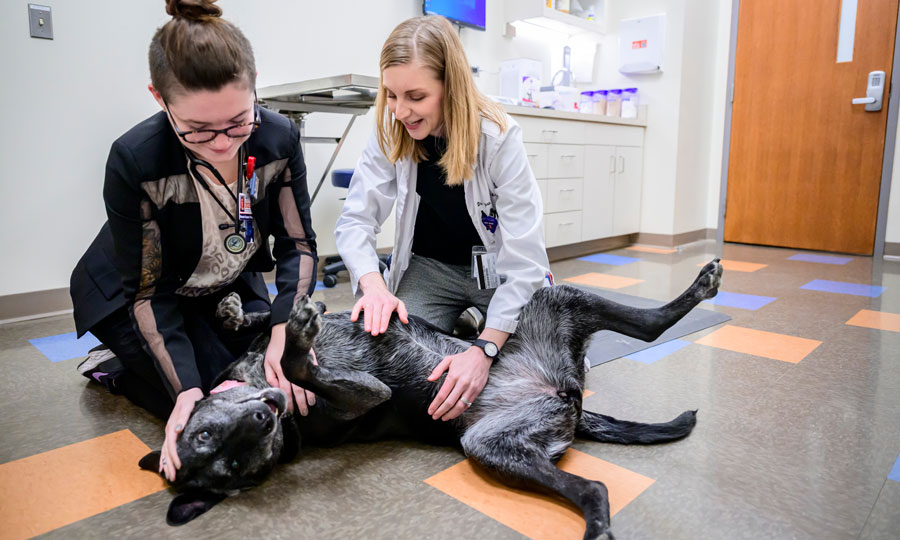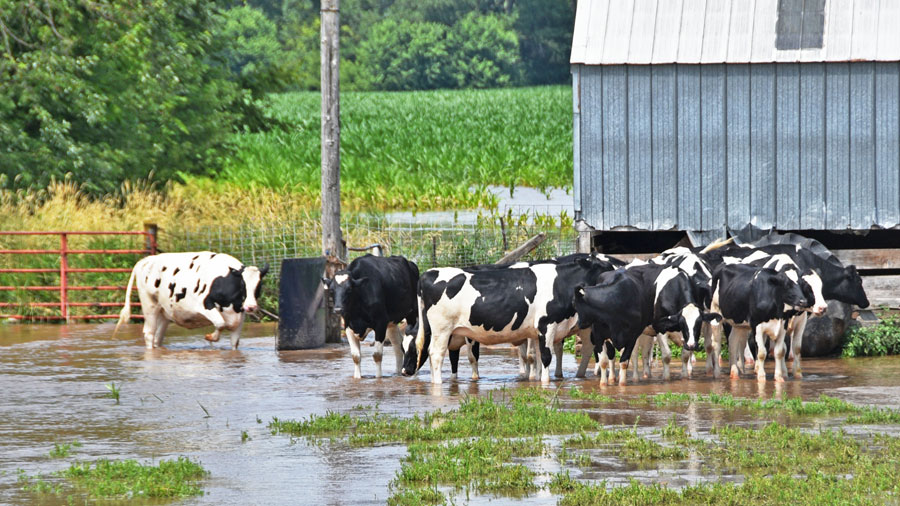Regulations control wording on a pet food label
The seemingly endless brightly colored cans, bags, and boxes in the pet food aisles can be quite overwhelming for pet owners. Dr. Kelly Swanson, an animal sciences professor at the University of Illinois who lectures on nutrition to students at the College of Veterinary Medicine, has some practical advice for conscientious consumers: Read the labels to learn what you are buying.
First Things First
What should pet owners be looking for? “The first thing is the life stage and species it is intended for,” says Swanson. The life stage refers to the varied nutritional needs of pets at different ages, such as puppy/kitten or adult. And while it may seem obvious that owners should take note of the intended species, serious nutritional deficiencies may arise if, for example, cats are fed dog food over an extended period.
Swanson also advises looking for the phrase “complete and balanced” on the label.
There are two specific components on every pet food label that owners should review: the Principal Display Panel and the Information Panel.
The Principal Display Panel must include the following:
- Product name
- Net quantity statement (the weight of the product in pounds, kilograms, etc.)
- Product identity (dog food; cat food; snack/treat)
The Information Panel must include the following:
- Guaranteed analysis
- Ingredient statement
- Nutrition adequacy statement
- Feeding guidelines
- Name and address of manufacturer
- Information required by FDA for health claims
Swanson says that the feeding guidelines are especially important so that owners know how much of the product a pet should be eating per day. “Like people, pets should be fed to a healthy body condition score,” he says, noting that pet obesity is a major health problem.
Label Claims
“Pet food companies often focus their marketing on specific ingredients to appeal to certain consumers, but a particular ingredient does not mean the product is superior,” warns Swanson. These types of claims fall into three main categories: nutrient claims, function claims, and health claims. Nutrient content claims focus on a specific nutrient that the food contains, such as “high in fiber.” A function claim will explain what the food will do for the pet, such as “supporting a healthy immune system.” The last claim type, a health claim, states what health aspect will be improved for the pet, such as “improves and lengthens quality of life.” There are regulations that control the wording used on pet food labels, and what may seem like a small difference in phrasing can reflect a big difference in the content of the food.
For example, a product labeled “lamb for dogs” must contain at least 95 percent lamb, while a product labeled “dog food with lamb” may contain as little as 3 percent lamb. The word flavor in a pet food label means that there is not a specific percentage but instead is an amount that can be detected.
In the example “Chicken Formula Cat Food,” the word formula means that the chicken will make up between 25 percent and 95 percent of the food; the remainder contains other meats and ingredients. The best way to know what exactly is in these various meals is to check the ingredient list. Knowing these labeling facts will help owners make educated choices for their pets.
Food Safety Regulations
Commercial pet foods must also meet certain regulations and guidelines to ensure that the food is safe for animal consumption. Swanson explains that regulatory agencies involved in this process include the Association of American Feed Control Officials (AAFCO), the Environmental Protection Agency, the Pet Food Institute, and state feed control offices. Each of these organizations has distinct duties to ensure safe pet food.
“Most [pet food companies] follow AAFCO recommendations with some modifications, since each state has its own rules,” says Swanson. Owners will find an AAFCO statement on the label of food that meets these recommendations.
A balanced and nutritious diet is an important part of your pet’s overall health and well-being. By carefully reading the pet food label and by following feeding guidelines to keep your pet at an appropriate weight, you are giving your pet a great foundation for a healthy life.
If you have concerns about your pet’s food, please contact your veterinarian.
By Beth Pieper

![[cat eating from a bowl]](https://vetmed.illinois.edu/wp-content/uploads/2021/04/pc-food_label-swanson.jpg)


